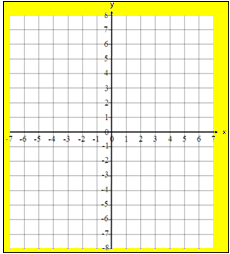Who is it for?
Any teacher of any subject at any level, regardless whether they like using mini whiteboards or not.
The problem
Lots of people rave about using mini-whiteboards in lessons. I have used them in the past and it has been ‘OK’, but I hadn’t really felt they were as wonderful as other people made them out to be. This post explains my frustrations with them and why I am now a convert.
When I first came across mini-whiteboards I loved the idea … but not putting it into practice. I could see why it was useful for pupils to be able to jot things down quickly, for me to be able to see immediately what each pupil could/couldn’t do, and as a way of generating lots of information (eg: “write down any multiple of 9”).
Unfortunately, for me, the hassle of giving them out for a starter activity, of sorting out pens with missing caps or which were dried out, and of replacing the board wipers meant that I spent more time trouble-shooting than enjoying using them. I tried having a pack for each pupil in a zip-wallet and giving these out, but this still led to problems with pens and wipers. The wipers would get dirty quickly and need to be replaced or washed and I never felt I got a nice clean start to a lesson when I used them.
This term my Yr 11 class needed to revise straight line graphs, which they hadn’t fully understood back in Yr 10, prior to extending the concept to cover new topics.
Revisiting the idea
To help the Yr 11 class I printed out some grids with an x-axis and a y-axis (to provide the background to the graph) and had them laminated. I had a box of dry-wipe pens and, instead of using bits of sponge or cloth, tore up pieces of kitchen roll for the pupils to use.
They loved using them, I loved the lessons and it worked very well indeed.
What was different?
There were a number of things that were different about the way I used the mini whiteboards with this class and any of them could have made this work:
- The materials were tailored for this group. The boards had exactly the right printing on them and were an appropriate size.
- There was a real benefit to using them. They formed an integral part of the sequence of lessons. In the past perhaps I had been guilty of “trying out a new idea”, without there being clear about the gains that would result?
- I explained carefully to the class why we were using them (a topic they had found difficult, a topic they now need to extend, I had planned what I thought was a great new way of doing it). Perhaps I gained greater buy-in from the pupils?
- The logistics were easier. Rather than using them as part of a starter activity, I handed them out while the pupils were working on an initial question. Using a scrap of kitchen roll that the pupils binned at the end of the lesson was ideal.
- I last tried using the boards a year ago. Maybe the ways I have changed as a teacher since then helped this to work better?
Lessons for me
I have resolved to be clear about the benefits when using something different from my usual practice and to revisit old ideas and practices to see if I can see something new in them.
1 ping
Teacher's Toolkit for JIS Classrooms - Using Mini White Boards says:
April 30, 2012 at 5:02 am (UTC 0 )
[…] Website 1 Website 2 Website 3 […]